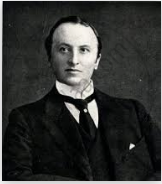Advertisements
Advertisements
प्रश्न
Match the following:
| Column A | Column B |
| 1. Dadabhai Naoroji | (a) 1905 |
| 2. Assertive nationalists | (b) separate electorates |
| 3. Partition of Bengal | (c) use of only Indian goods |
| 4. Muslim League | (d) immediate freedom from British rule |
| 5. Swadeshi | (e) early nationalists |
उत्तर
| Column A | Column B |
| 1. Dadabhai Naoroji | (e) early nationalists |
| 2. Assertive nationalists | (d) immediate freedom from British rule |
| 3. Partition of Bengal | (a) 1905 |
| 4. Muslim League | (b) separate electorates |
| 5. Swadeshi | (c) use of only Indian goods |
APPEARS IN
संबंधित प्रश्न
Choose the correct answer:
The British followed the policy of divide and rule by dividing____on communal lines.
State whether the following is true or false:
Tilak knew that the British would concede to the demand for swaraj easily without any struggle.
Answer the following question briefly:
With reference to the Indian national movement, answer the following: Why do Indians still respect and revere Netaji?
Answer the following question briefly:
With reference to Indian independence, answer the following question: What is the significance of 26 January 1950?
Fill in the blanks:
The Swaraj Party was led by ____ and ____.
Fill in the blank:
The Quit India Movement took place in the year ____.
Fill in the blank:
Lord Mountbatten came to India in 1947 as ______.
Fill in the blank:
Gandhiji’s method of agitation were ________ and _____.
State whether the following statement is true or false:
The religious and social reform ^movement divided the Indians.
Look at the given picture.

What was the real reason behind the partition.
